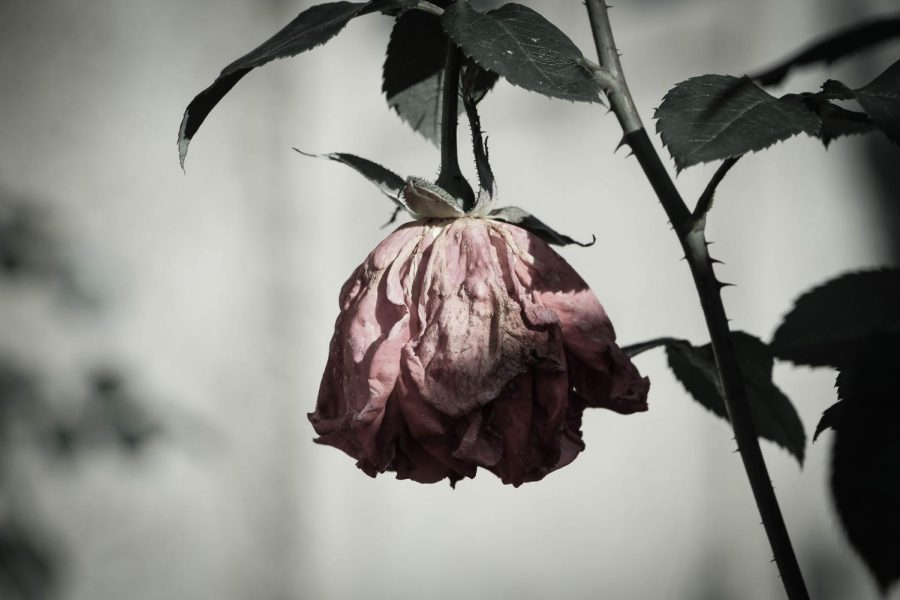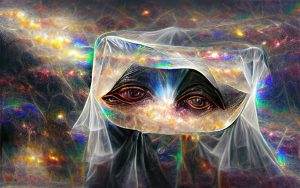SAD is Real: It’s Always the Right Season to Get Help
You probably wonder what’s causing you to not feel so merry this season. Here’s your answer.
“Depressed rose” by teteroon is marked with CC0 1.0.
Wilted rose. The weather gets harsh and leaves no exception for once beautiful and lively flowers like roses. Like flowers not being able to survive certain seasons, humans also find it hard to live with their mental health during a specific part of the year.
February 15, 2023
The month of January: it’s the time of year to put Christmas carols behind us and begin a new semester. For most students, including myself, this time of year it’s especially a hassle to find the motivation to get out of bed. I mean, who would want to leave their warm bed to sit in a freezing classroom?
I see many students complain about this online, how the mere thought of leaving the coziness of their covers for something as tedious as school causes them great distress. Some even go as far as to say that waking up for school during the winter has caused them to experience “seasonal depression.” Skeptics of this disorder are quick to disagree with this statement.
Stevan LoBello, a co-author for a study in “Clinical Psychology Science” says that, “It’s a very broadly held cultural belief that the seasons and moods are correlated. When you ask someone in the street when they feel the worst, they’ll say ‘winter’…One of the things going on is there could be a drop in mood during winter…but a drop in mood is not depression.”
According to Mental Health America, a nation-wide nonprofit organization, seasonal depression, also known as seasonal affective disorder (SAD), is experienced by about 5 percent of the U.S. population in any given year.https://t.co/3v0B5bVmVe
— Family & Children (@FamChildService) March 14, 2019
To understand the arguments for the validity of Seasonal Affective Disorder, or SAD, it’s important to know what it is. So what even is seasonal depression? Like you’ve probably assumed from its name, SAD is a type of depression that occurs at the same time annually, typically when there is less sunlight.
It’s natural for people to feel down during the winter. If you go outside and ask anyone if the weather is causing them to feel downhearted or miserable, they will probably tell you that you’re correct. This causes many people to draw upon the conclusion that this is what season depression looks like; but in reality, SAD is more than just those bursts of sadness during a cold time. It’s a serious depression and a challenging mental battle.
According to the National Institute of Mental Health, the disorder appears mostly in the winter months, but some can experience this in the summer and spring seasons as well. This causes many to be surprised, as people with symptoms during the warmer seasons don’t get as much awareness as those experiencing symptoms in colder parts of the year.
The symptoms for both cases are associated with common depression symptoms, such as sleep problems, loss of energy, and an increase in thoughts about death and suicide. There are specific symptoms that accompany the time that SAD hits; for example, people with seasonal depression during winter months usually have problems like oversleeping and overeating, while others with summer patterns experience insomnia and a low appetite.
LoBello also stated how people’s moods generally being lower during the winter seasons isn’t a straight sign of Depression. Of course, I understand that feeling sad in these times isn’t an automatic diagnosis of mental illness, but claiming it isn’t real is invalidating the ten million Americans it has impacted. If it’s such a high number in just one country, take a moment to imagine how many cases there are worldwide.
Critics of SAD may ask, “How do we know these are real cases?” It’s true that many people don’t have the knowledge to understand what having seasonal depression actually looks like. Self-diagnosing can be very inaccurate, and social media often spreads even more misinformation to people.
An anonymous high-schooler states, “Some people on social media treat SAD as a joke…It’s bothersome when I see people who likely don’t suffer from SAD or other forms of depression say that they have it.”
However, not all people that are suffering with this illness are strangers on the Internet. Many in our community at South Forsyth High also speak up about issues with their mental health during the harsh winter times.
A freshman at South, who wishes to remain anonymous, said, “During midterms? It just adds onto the stress I’m feeling…I’m stressed out, trying my best to get grades that are an A. But the weather is usually gloomy, cloudy and cold. That overall, just brings my mood down, and I’m unable to muster up enough motivation or energy I need to pick myself up to study…leading me to getting bad grades.”
So, what can we as a society do to help those with seasonal depression? For starters, we can encourage people to spread real and actual information about this disorder. By eliminating flawed and distorted evidence, we can give the world facts to guide themselves upon when they suspect themselves of the illness, while also validating those with a diagnosis.
Another way to start is by getting it properly diagnosed and begin recovery, even if it seems unnecessary. It’s tempting to assume you can just wait for SAD to “go away” and that it isn’t as important as regular Depression because of the shorter time span. But ask yourself, why should you remain dejected, even for a “short” amount of time? Shouldn’t you be happy all year around?
You don’t need to be unhappy all the time or have a more “serious” disorder to deserve help, especially because putting off treatment will cause symptoms to escalate. Be kind and patient towards yourself, remember that SAD is real, and recovery is for the best.





